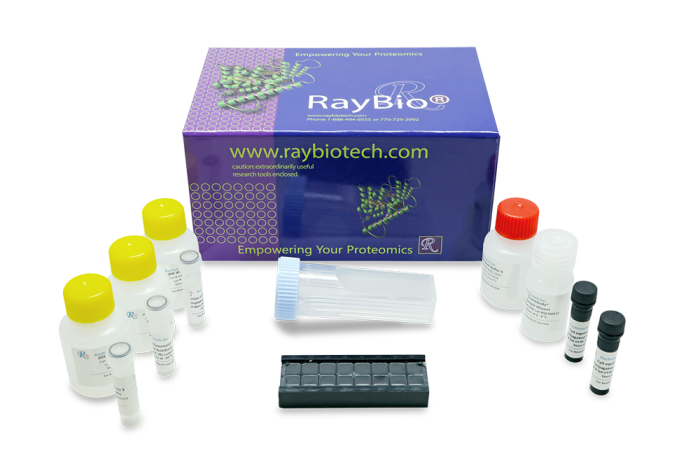Product Features
- More cost-effective than traditional ELISA
- High specificity and system reproducibility
- Suitable for diverse sample types
- Get results same day (6-hour processing time)
- Well-suited for high throughput assays
- Q Analyzer software provides one-step computation
Target Names
4-1BB (TNFRSF9/CD137), 4-1BB Ligand (TNFSF9), ACE-2, Activin A, Activin R2A, ADAM-9, ADAMTS-1 (METH1), Adiponectin (ACRP30), aFGF (FGF-1), ALCAM (CD166), Ameloblastin, Angiopoietin-2, Angiotensinogen (SERPINA8), ApoH, ASAH2 (Neutral Ceramidase), BAFF, BAMBI (NMA), BDNF, Beta-2 Microglobulin, beta-NGF, BID, BMP-7, BST1, C4.4A (LYPD3), Cadherin-4, Carbonic Anhydrase XIV (CA14), Carboxypeptidase A1 (CPA1), Carboxypeptidase B1 (CPB1), Cathepsin B (Pro-Cathepsin B), Cathepsin C, Cathepsin E, Cathepsin L, CD14, CD155 (PVR), CD164, CD1d1, CD226, CD28, CD300LG, CD34, CD36 (SR-B3), CD38, CD40 (TNFRSF5), CD44 (Heparan Sulfate Proteoglycan), CD47, CD48 (SLAMF2), CD5, CD59, CD5L, CD6, CD80 (B7-1), CD83, CD86 (B7-2), CD93, CDH5, CDNF, CEACAM-1, CINC-1 (CXCL1), CINC-2, CINC-3, CLEC4B2, CLEC5A, Clusterin, CNTF, Coagulation Factor III (Tissue Factor/Thromboplastin), Coagulation Factor XIV (Protein C), Contactin-1, Contactin-3 (BIG-1), Contactin-4 (BIG-2), COPZ1, CPA2, CRELD1, CRELD2, CRP (C-Reactive Protein), CSF1R, CTACK (CCL27), CXCL16, Cystatin C, Decorin, DKK-3, DLL1, DSC2, ECM-1, EGF, EGFR, Endoglin (CD105), Eotaxin-1 (CCL11), EphA3, EphA5, EphB3, EphB6, Ephrin-A2, ErbB3, Erythropoietin, E-Selectin, FABP4 (A-FABP), Fas (TNFRSF6/Apo-1), Fas Ligand (TNFSF6), Fc gamma RIIB (CD32b), FCAR (CD89), FCGR3A, FCGRT, FETUB, FGF R4, FGF-12, FGF-21, FGF-BP, Flt-3 Ligand, Follistatin, Follistatin-like 1, FOLR1, Fractalkine (CX3CL1), Galectin-1, Galectin-3, Gas 1, GDF-3, GDF-8 (Myostatin), GDNF, GFR alpha-1 (GDNF R), GFR alpha-2, GFR alpha-3, GGT1, GITR (TNFRSF18), GM-CSF, gp130 (sgp130), Heparan Sulfate 6-O-Sulfotransferase 3 (HS6ST3), HGF, HPX, Human Amyloid-like protein 1 (APLP-1), ICAM-1 (CD54), Iduronate 2-Sulfatase (IDS), IFN alpha 5, IFN-gamma, IFN-gamma R2, IGF-1, IGFBP-1, IGSF4B (SynCAM3/CADM3), IGSF8 (CD316), IL-1 alpha (IL-1 F1), IL-1 beta (IL-1 F2), IL-1 R1, IL-1 R2, IL-1 R6 (IL-1 Rrp2), IL-1 Ra (IL-1 F3), IL-10, IL-11 R alpha, IL-12 p70, IL-13, IL-13 R alpha 2, IL-15 R alpha, IL-17 RA, IL-17 RC, IL-17F, IL-18, IL-2, IL-2 R alpha, IL-2 R gamma (Common gamma Chain), IL-20 RB, IL-21, IL-21 R, IL-22, IL-3, IL-31, IL-4, IL-4R, IL-5, IL-6, IL-7, IL-7 R, IL-9, IL-9 R (CD129), Jagged 1, JAM-A (CD321/F11R), JAM-C (CD323), KDR, Kininogen (Kininostatin), KLKB1, Klotho beta, Lactoferrin, Layilin, Legumain, Leptin, LIF, Lipocalin-2 (NGAL), LIX, LRPAP, L-Selectin (CD62L), Lumican, Lymphotoxin beta R (TNF RIII), MAG, Matrilin-4, MBL-2, MCP-1 (CCL2), MCP-3 (MARC/CCL7), MESDC2, MIP-1 alpha (CCL3), MIP-1 beta (CCL4), MMP-2, MSP alpha/beta, Nephrin, Neurexin 1 alpha, Neurexophilin-1, Neurexophilin-3, Neuroligin-1 (NLGN1), Neuropilin-1, Neuropilin-2, Neuroplastin, Noggin, Nope, Notch-1, Notch-2, Notch-3, NPC2, NT5E, Olfactomedin-1, Osteopontin (SPP1), OX40 (TNFRSF4), P-Cadherin, PDGF R alpha, PDGF-AA, PDGF-BB, Pentraxin-2, PGC, PGRPs, pIgR, Plexin A1, PLTP, Pref-1 (DLK-1/FA1), PROCR, Prolactin, Prolactin R, Protocadherin-12, PSAP, P-Selectin, PVRL1, RAGE, RANK (TNFRSF11A), RANTES (CCL5), RBP4, Reg3A, Reg3B, Reg4, Renin 1, RGM-B, ROBO1, SCF, SCGF (CLEC11a), SEMA3F, Semaphorin 4D, Semaphorin 7A, SERPINA1c, SERPINA3N, SERPIND1 (Heparin Cofactor II), SERPINE1, SERPINF1 (PEDF), SERPINF2 (Alpha-2-Antiplasmin), SGSH, SIGNR1 (CD209b), SIRP alpha, Sortilin, SP-D, STX7, Syndecan-1, Syndecan-3, TCK-1 (CXCL7), TGF beta R3, TIM-1 (KIM-1), TIMP-1, TIMP-2, TNF alpha, Transferrin, TREM-1, TrkA, TRKB, TROP1 (EpCAM), Trypsin 3 (PRSS3), TWEAK R (TNFRSF12), UCH-L1, UNC5H1 (Netrin Receptor UNC5A), VEGF-A, VEGFR1, XPNPEP2
Application Notes
Suggested Application
Multiplexed Protein Detection; Biomarker Screening; Identifying Key Factors; Confirming Biological Process; Biomarker Validation; Validation of Antibody Array Results; Quantitative Protein Detection; Establishing Normal Range
Kit Components
- Rat Cytokine Array Q282 Slide(s)
- Blocking Buffer
- Wash Buffer 1
- Wash Buffer 2
- Lyophilized Standard Mix
- Biotinylated Detection Antibody Cocktails
- Streptavidin-Conjugated Fluor
- Slide Washer/Dryer
- Adhesive Plastic Strips
- Manual
Other Materials Required
- Distilled or deionized water
- Small plastic boxes or containers
- Pipettors, pipette tips and other common lab consumables
- Orbital shaker or oscillating rocker
- Aluminum foil
- Gene microarray scanner or similar laser fluorescence scanner
View Compatible Laser Scanners
Don't have a compatible scanner? RayBiotech now offers FREE scanning service for all RayBio glass slide antibody arrays! Learn More
Protocol Outline
- Dry the glass slide
- Prepare Standards
- Block array surface
- Incubate with Samples and Standards
- Incubate with Biotinylated Detection Antibody Cocktail
- Incubate with Streptavidin-Conjugated Fluor
- Disassemble the glass slide
- Scan with a gene microarray laser scanner
- Perform densitometry and analysis
Storage/Stability
For best results, store the entire kit frozen at -20°C upon arrival. Stored frozen, the kit will be stable for at least 6 months which is the duration of the product warranty period. Once thawed, store array slide(s), standard mix, detection antibody cocktail, and Cy3-Conjugated Streptavidin at -20°C and all other reagents undiluted at 4°C for no more than 3 months.


